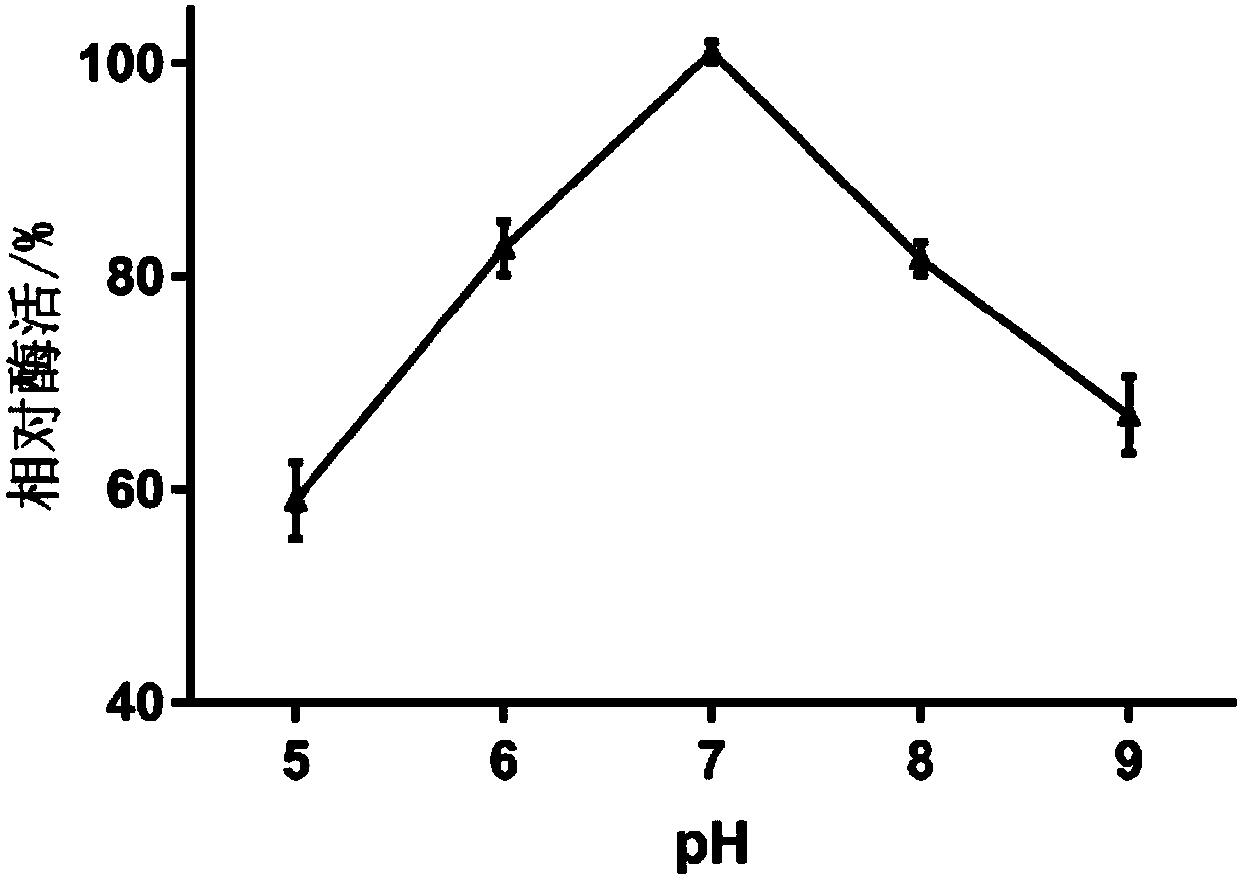Biosynthesis method of beta-alanine
A biosynthesis and alanine technology, applied in the biological field, can solve the problems of unsatisfactory stability of L-aspartate-α-decarboxylase, increase the cost of separation and purification, unfavorable industrial production, etc., so as to eliminate the need for separation and purification , Avoid the use of antibiotics, the effect of fast production rate
- Summary
- Abstract
- Description
- Claims
- Application Information
AI Technical Summary
Problems solved by technology
Method used
Image
Examples
preparation example Construction
[0027] The amino acid mixture mentioned in the preparation of the above seeds and induction medium contains the following components: Arginine 0.2g / L, Aspartic acid 1.0g / L, Glutamic acid 1.0g / L, Isoleucine Acid 0.3g / L, Lysine 0.3g / L, Valine 1.5g / L, Methionine 0.2g / L, Phenylalanine 0.5g / L, Serine 3.75g / L, Tyrosine 0.3g / L And adenine 0.4g / L.
[0028] On this basis, the present invention further provides a biosynthetic method of β-alanine, the method is to use the whole cell of the above-mentioned recombinant Saccharomyces cerevisiae of the present invention to catalyze the conversion of L-aspartic acid into β-alanine ; Wherein the recombinant Saccharomyces cerevisiae contains exogenous L-aspartic acid-α-decarboxylase coding gene. The exogenous L-aspartic acid-α-decarboxylase coding gene mentioned therein has the nucleotide sequence described in SEQ ID NO.1, and the Saccharomyces cerevisiae EBY100 as the exogenous gene carrier is preferably Saccharomyces cerevisiae EBY100.
[0...
Embodiment 1
[0043] Construction and cultivation of surface-displayed recombinant Saccharomyces cerevisiae:
[0044] First, the panD gene was amplified using the Bacillus subtilis 168 genome (GenBank: CP019663.1) as a template, and the PCR product and the expression vector pYD1 were digested and purified by using restriction endonucleases BamH I and Xho I, and ligated overnight, and then It was transformed into Escherichia coli DH5α, the ampicillin resistance gene was used to screen the transformant, and it was verified by PCR and enzyme digestion and DNA sequencing, and then stored in the plate medium after verification. The result of the recombinant vector is as figure 1 shown. Secondly, extract the recombinant expression vector, and transform it into Saccharomyces cerevisiae EBY100 competent cells, use the defect-type screening to obtain positive transformants, activate the positive transformants and inoculate them into the seed medium, and wait for the cells to grow to OD 620 =1.0-5...
Embodiment 2
[0047] Effects of different reaction pH on the catalytic synthesis of β-alanine by recombinant Saccharomyces cerevisiae displayed on the surface:
[0048] The cultivation of recombinant Saccharomyces cerevisiae displayed on the surface was the same as in Example 1, and the cells were collected by centrifugation for catalytic reaction. The effects of different reaction pH 5 (acetate buffer) and 6 / 7 / 8 / 9 (phosphate buffer) on the catalytic synthesis of β-alanine by recombinant Saccharomyces cerevisiae displayed on the surface were studied. Dissolve 2.66g L-aspartic acid in 90mL buffer solution, maintain the above pH with 6M NaOH solution and 10% hydrochloric acid, add recombinant Saccharomyces cerevisiae into the reaction system, and make the biomass OD in the reaction solution 620 =1.0~5.0, control the temperature at 37°C, take samples every hour to measure β-alanine, until L-aspartic acid is completely converted, centrifuge to get the supernatant, and use high performance liqui...
PUM
 Login to View More
Login to View More Abstract
Description
Claims
Application Information
 Login to View More
Login to View More - R&D
- Intellectual Property
- Life Sciences
- Materials
- Tech Scout
- Unparalleled Data Quality
- Higher Quality Content
- 60% Fewer Hallucinations
Browse by: Latest US Patents, China's latest patents, Technical Efficacy Thesaurus, Application Domain, Technology Topic, Popular Technical Reports.
© 2025 PatSnap. All rights reserved.Legal|Privacy policy|Modern Slavery Act Transparency Statement|Sitemap|About US| Contact US: help@patsnap.com



